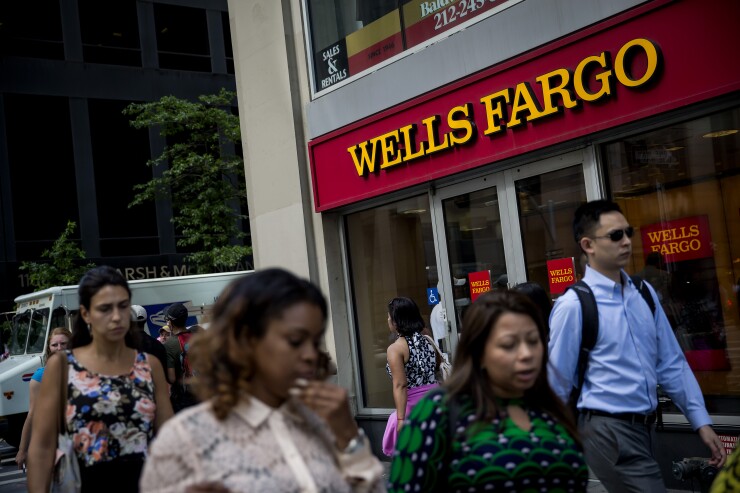Wells Fargo will keep a client segmentation bonus intact but change base tiers for deferred compensation in its advisor pay plan for 2019, according to a summary of the plan seen by On Wall Street.
“When you dig into it, we think it incentivizes the right things — which [are] client outcomes and client experiences,” says John Alexander, who oversees the firm’s Private Client Group West.
Wells Fargo is the last wirehouse to debut its 2019 compensation plan. As in previous years, Wells Fargo will not change its monthly hurdles ($11,500; $12,500; $13,250) or grid payout rates under next year’s comp plan. The wirehouse last modified hurdles and grid rates in 2014 and 2011, respectively.
Last year, Wells Fargo
“We thought it would be well received, but the reception was greater than what we thought,” Alexander says.
Our annual analysis of starting payouts for wirehouse, regional and national brokerage firms.
Advisors who have 75% of what the wirehouse dubs key households (net AUM of $250,000 or more) and who meet other criteria are eligible for the bonus. Criteria are broken down into two tiers and advisors are measured on a quarterly basis.
Requirements for the higher of the two tiers include 12-month trailing gross revenue of at least $2 million; an official team agreement on file for a minimum of six months; and 90% or more of the FA’s trailing 12-month gross revenue has to be shared among common team members (that’s meant to ensure the advisors are a bonafide team, not just two solo producers sharing some business). Eligible advisors who meet the requirements will receive a 50% grid rate applied to total gross revenue up to the monthly hurdle.
Next year, Wells Fargo will reward advisors who qualified for that tier in the first, second or third quarters of 2018 by including a provision for the additional quarters. Eligible advisors will receive the extra payment in the first quarter of 2019.

The firm’s length of service bonus remains unchanged for 2019 — but the base revenue tiers for its deferred compensation are moving up. Each tier’s maximum value has increased by approximately 10%. For example, the second revenue tier was $500,000 to $700,000 under the 2018 plan. Next year, it will be $550,000 to $770,000.
For advisors who are growing, the change may not affect them as they may move up a tier as they pass the threshold.
There remain 11 tiers in total and the base awards are unchanged, ranging from 5% to 10%.
The changes are meant to keep pace with advisor growth at the company, according to executives.
“Our FAs’ productivity has increased rapidly over the past five years,” according to Rich Getzoff, who oversees the Private Client Group East.
-
Our annual analysis of starting payouts for wirehouse, regional and national brokerage firms.
May 1 -
The forthcoming changes will build on digital investments the firm has made recently, according to an executive.
July 30 -
Compensation related to financial advisor recruiting fell 22% for the second quarter.
July 25 -
Advisors may be upset due to the high-handed attitudes of the larger firms, but pulling down six zeroes a year can offset a lot of irritation, says On Wall Street’s annual recruiters roundtable.
April 16
Lower producing advisors — those generating $250,000 or less and who have seven or more years with the firm — will also experience a grid rate change, dropping to a two tier approach of 19% and 47% instead of the firm’s standard 22% and 50%. The change does not apply to producing branch managers or advisors hired by Wells Fargo in the past 12 months.
Of course, Wells Fargo isn’t alone in encouraging advisors to push for new growth and to target high-net-worth clients.
In its 2018 plan, Merrill Lynch introduced bonuses to incentivize brokers to bring in new clients. The firm






